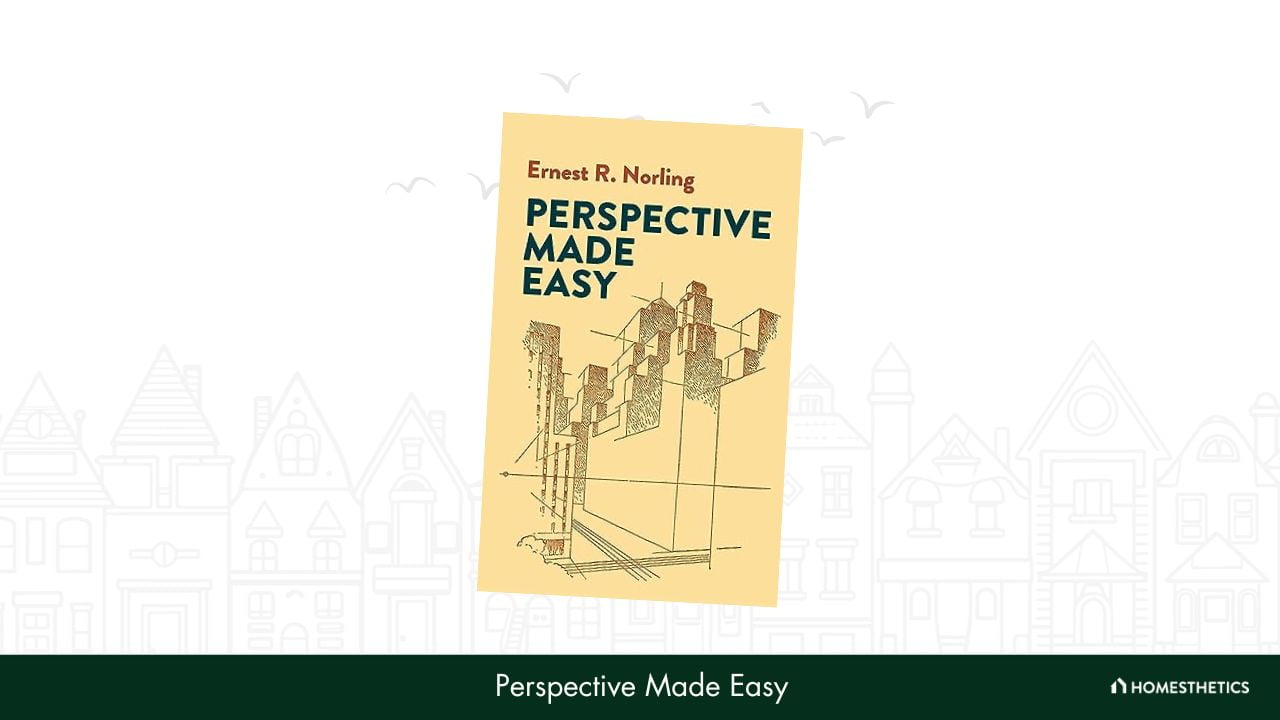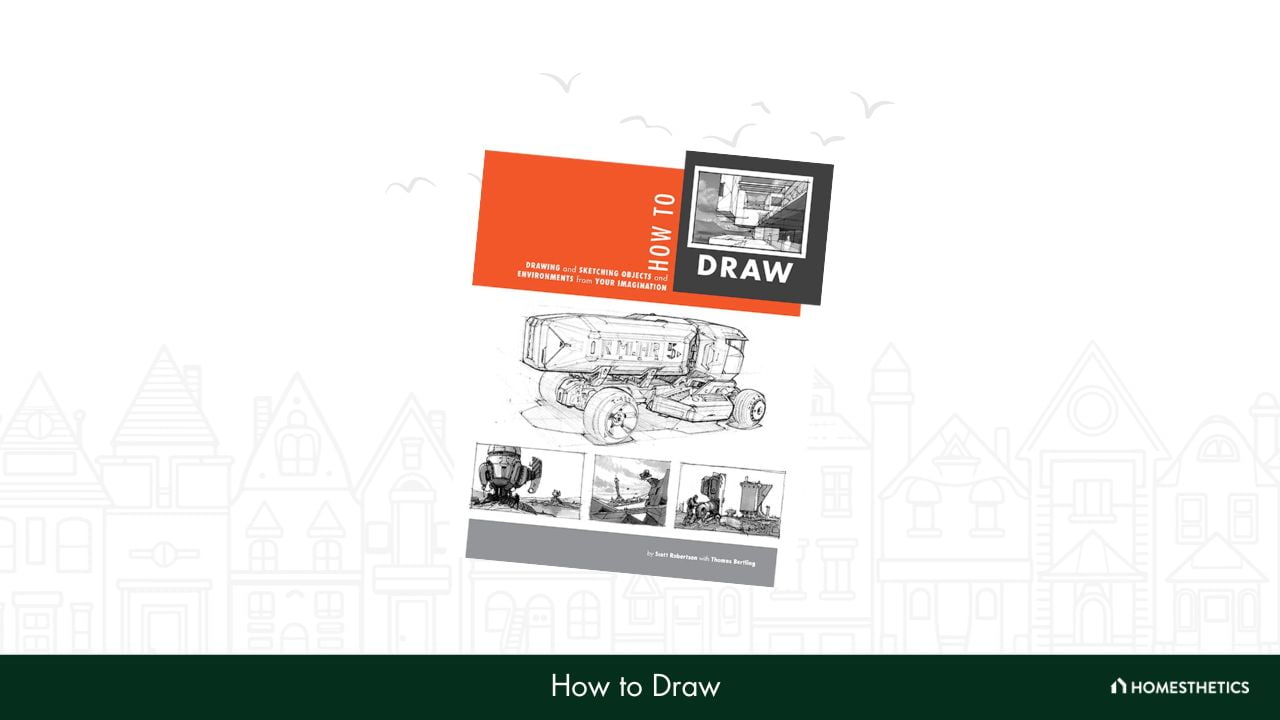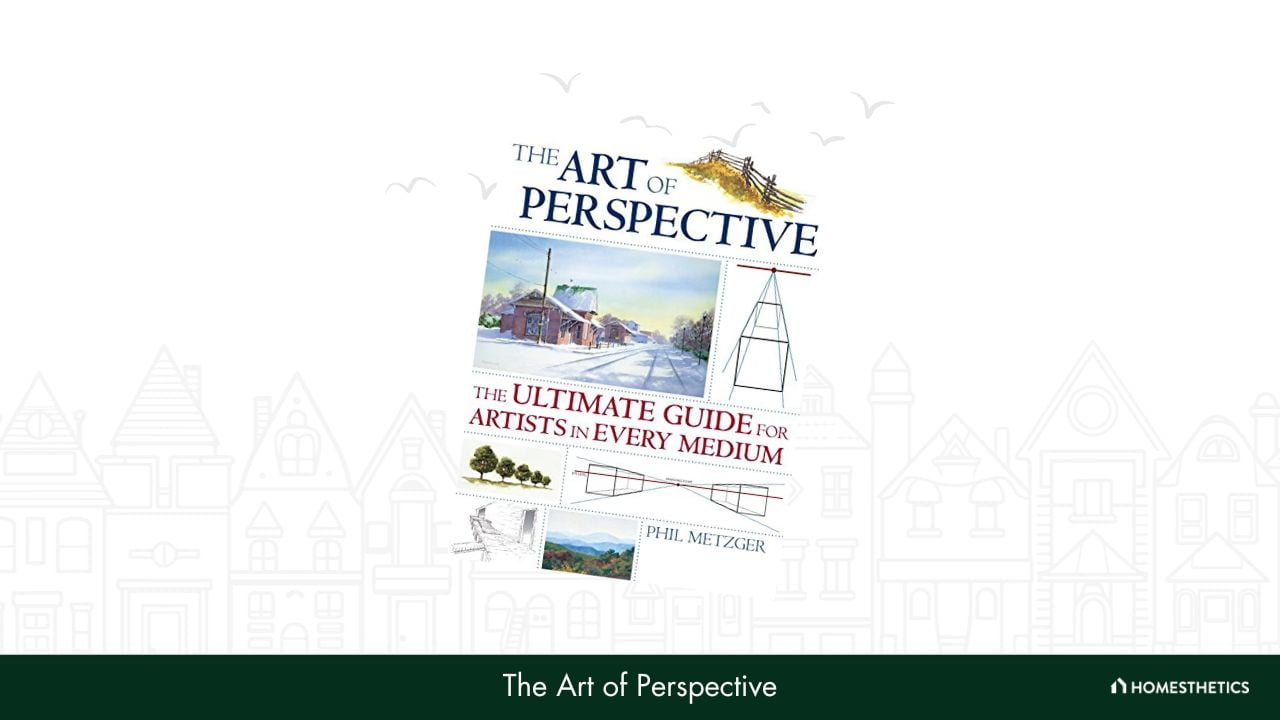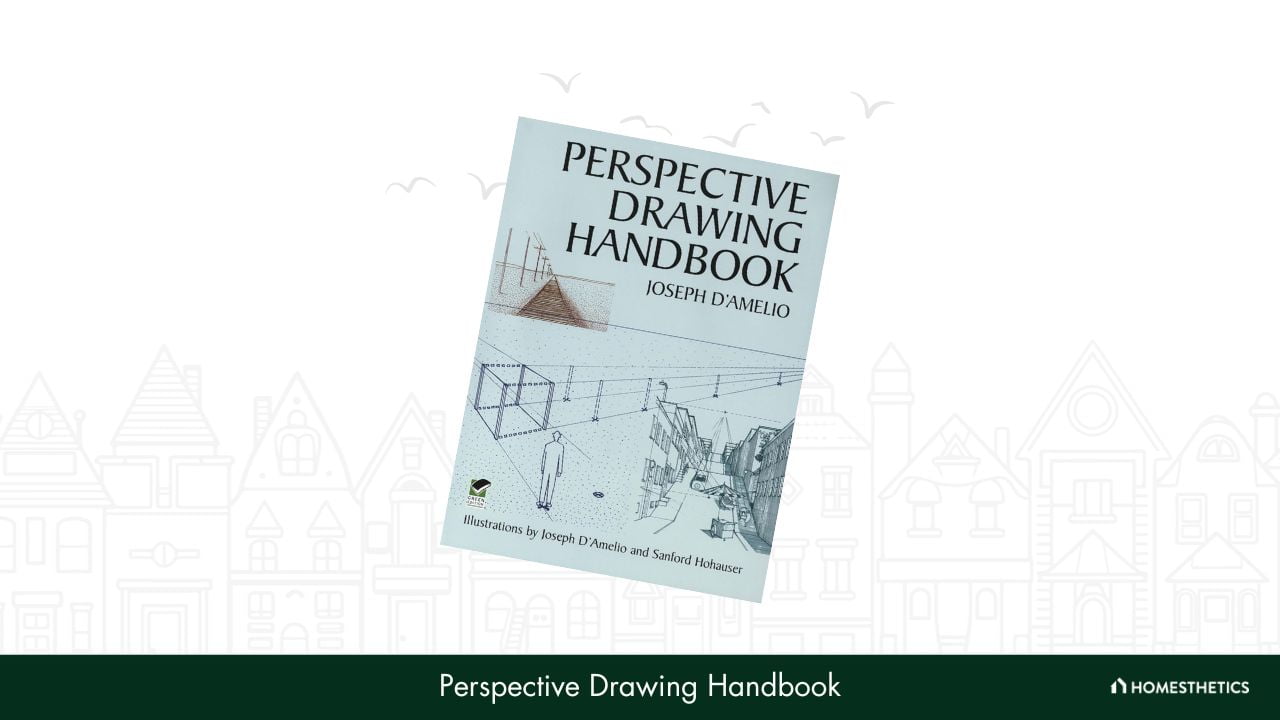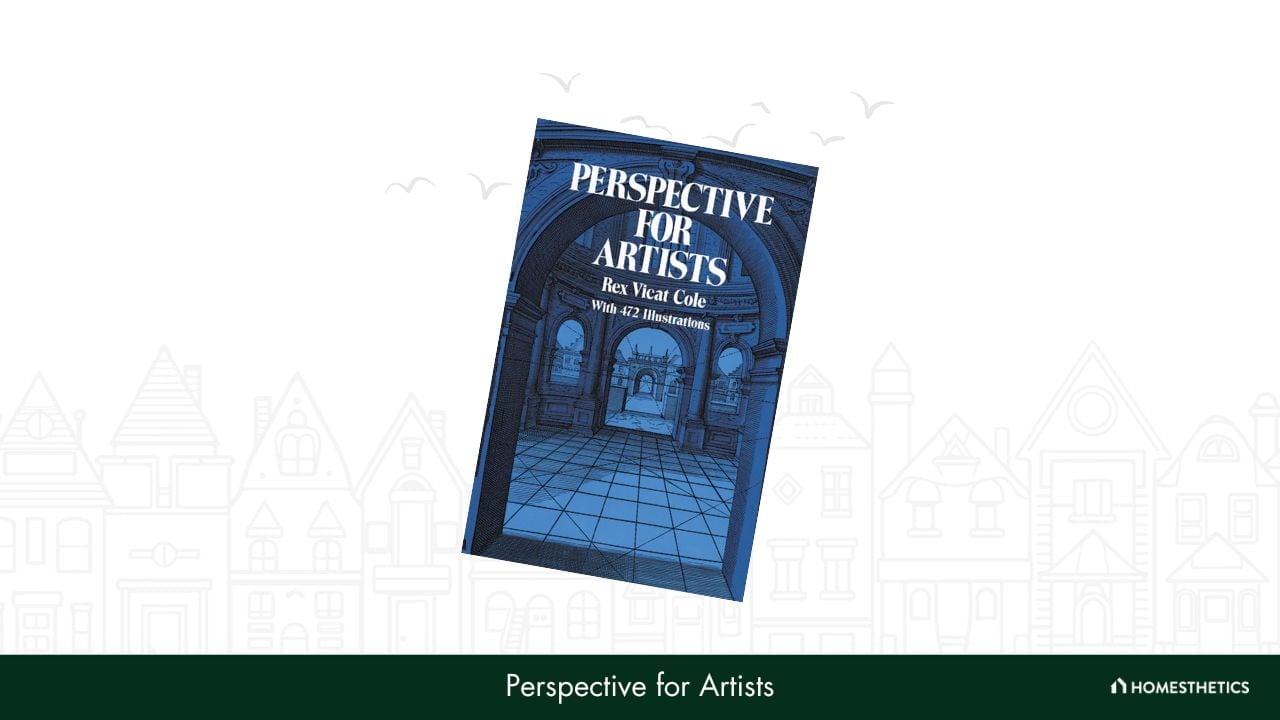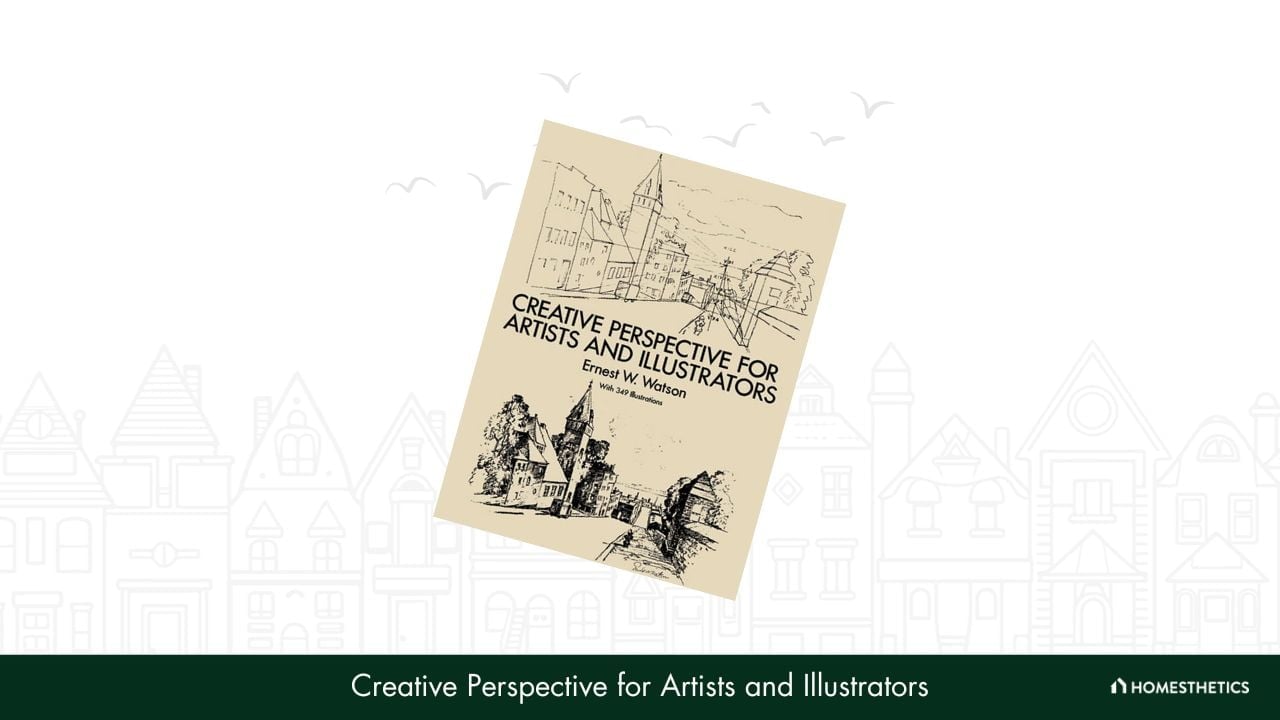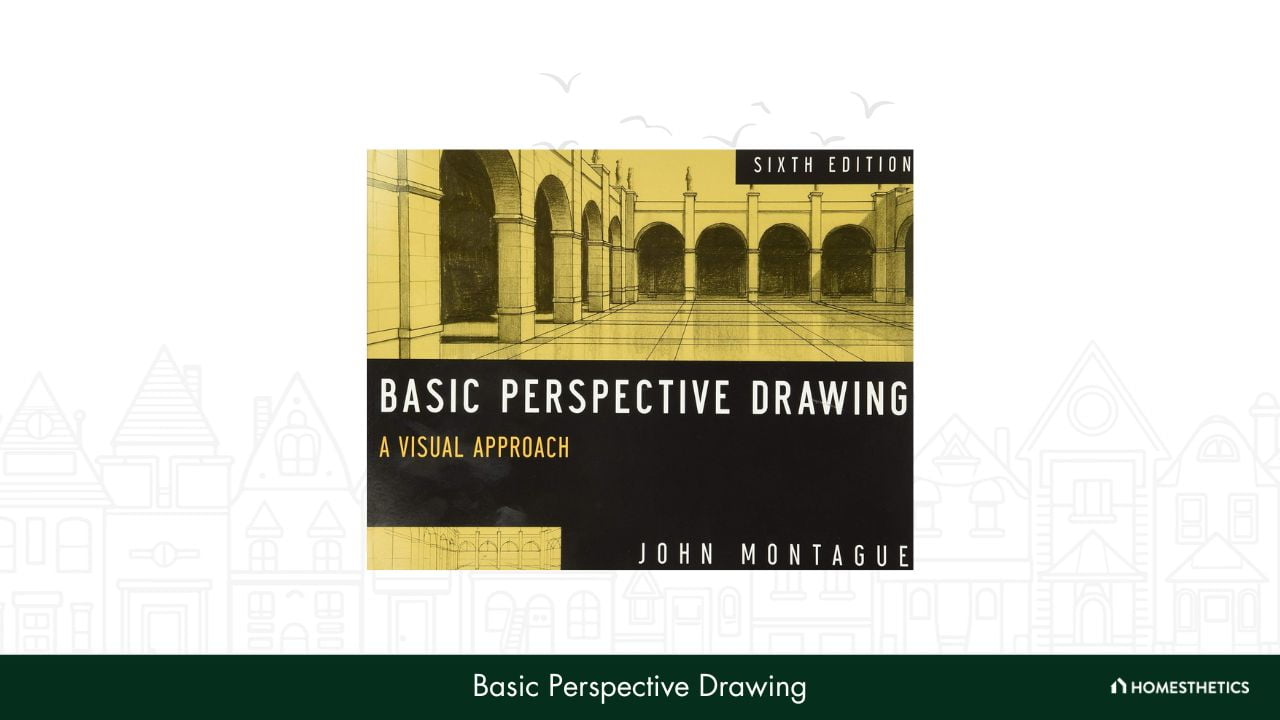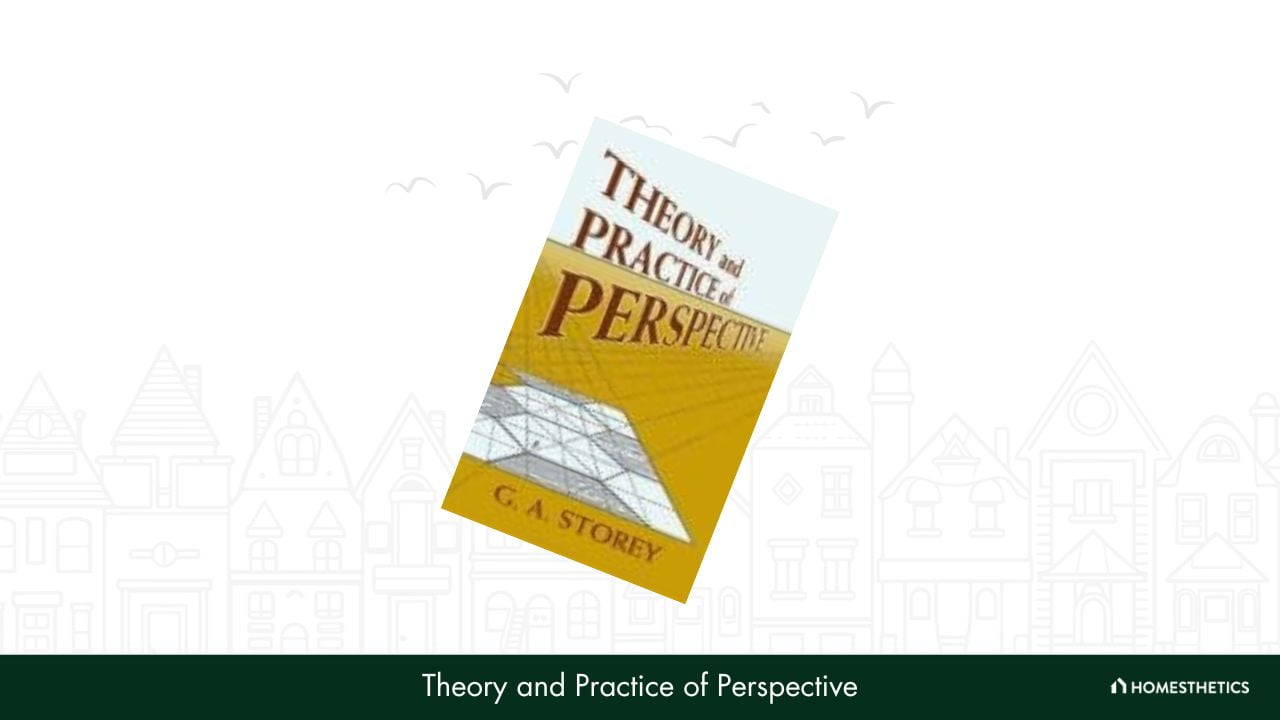The subject of perspective in art is extremely vast and requires a lot of dedicated studying and even more drawing practice to get a firm grasp on it.
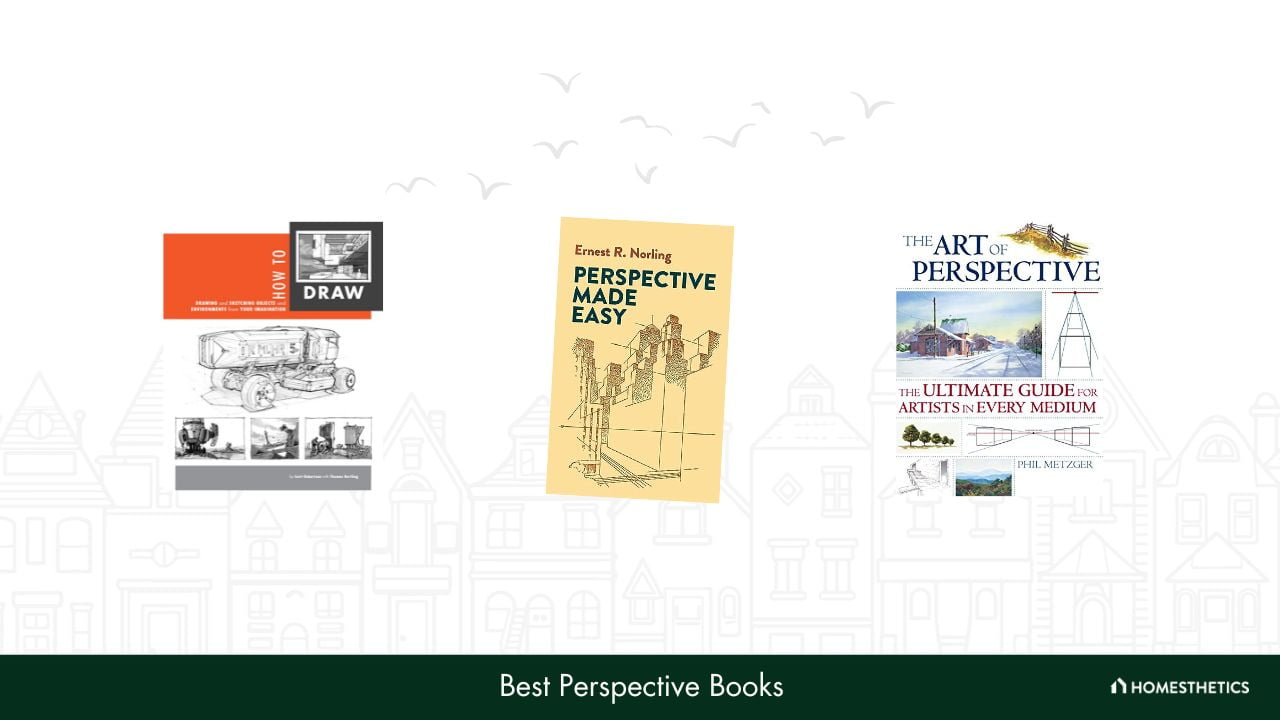
Artists often spend years studying the subject before it fully clicks, and even more on applying the concepts in their artworks. It is not something you learn in a day, but something that you need to study thoroughly and then put your ideas into practice over time.
If you're a beginner in the world of art, you most likely do not possess a lot of knowledge on this subject. However, it is one of the fundamentals that you absolutely need to learn as an artist.
Perspective is what defines how your artwork looks from different points of view. It applies to everything that you create in your art, be it a character or an environment.
While the subject is exceptionally detailed, there are plenty of books out there that can help you get a decent grasp on the subject in a fairly short amount of time.
Mastery will take time, but these books will definitely help you get started!
Listed below are the 5 best perspective books from our list:
Perspective Made Easy: Especially suitable for beginners, this book simplifies perspective's complexity and is celebrated for its affordability and easy-to-understand material.
How to Draw: Designed for intermediate artists seeking an in-depth understanding of perspective, it covers basic to advanced concepts, making it an ideal choice for artists past the beginner phase.
The Art of Perspective: The Ultimate Guide for Artists in Every Medium: This comprehensive guide offers a nifty blend of simple and complex techniques useful for artists at any skill level, creating a thorough analysis of perspective drawing.
Perspective Drawing Handbook: With a concise structure, this handbook provides an efficient shortcut toward mastering perspective drawing and is suitable for both beginners and experienced artists.
Perspective! For Comic Book Artists: This book focuses on perspective drawing specifically for comic artists, offering strategies for landscapes, characters, and animals, making it the go-to resource for comic book artists looking to enhance their perspective work.
Here is the list of the 10 best perspective books to help you hone your skills and perfect the technique of perspective drawing.
1. Perspective Made Easy - Best for Absolute Beginners
When it comes to understanding perspective in art, Norling's Perspective Made Easy is one of the best books for beginners to get started with!
At present, it is widely regarded as the best introductory text for beginners who wish to master this complicated subject. There are very few books out there on this subject that explain perspective in such a simple and straightforward manner as Ernest R. Norling has managed to do in this book.
Apart from being an extremely easy read, this book is also highly affordable. So if you're someone who has no idea where to get started on this topic, I highly recommend you get your hands on this.
Perspective Made Easy is one of the first books out there that was entirely devoted to clarifying the laws that govern perspective. The book begins with clear and concise discussions on topics such as vanishing points, horizons, and the relationship between eye levels to perspective drawings.
Irrespective of how much experience or pure talent you possess, you'll almost certainly be able to apply the techniques taught in this book instinctively once you're done studying it!
2. How to Draw - Best for Intermediate Artists
How to Draw by Scott Robertson is a book that I keep on recommending to artists who are looking to get in-depth with the different concepts of perspective. It is a practical guide to constructing and seeing different objects in perspective and is primarily aimed at teaching how to draw from your imagination while inventing perspective.
Robertson, who currently teaches at Pasadena's renowned ArtCentre, is one of my favorite authors when it comes to Concept Art. His teaching style is one of the most unique that I've come across, and the vastness of his knowledge becomes evident as soon as you go through a few chapters of this book.
In this book, you'll learn all the basics of perspective, such as 1-point, 2-point, and 3-point perspective, apart from a lot of advanced concepts that require a lot of dedicated study. Every chapter follows the previous one with each of them building on top of one another.
While this book is one of the best on this subject, it's not exactly something that I'd recommend to complete newbies. If you have no prior experience in perspective drawing, you'll find it quite hard to go past the first few lessons. But if you've gone past the beginner phase, this is one of the best books to go for!
3. The Art of Perspective: The Ultimate Guide for Artists in Every Medium - Best Comprehensive Guide
The Art of Perspective by Phil Metzger takes a very different route on teaching perspective, making it a must-have for all those of you who want to get a detailed analysis of the subject.
This is a relatively new book on perspective drawing, and also one of the most simple and straightforward ones I've come across in a long time. In this book, you'll be guided through a series of exercises and mini-lessons that will help you grasp the different notions associated with perspective.
The author has taken a brilliant approach towards demystifying perspective. The book offers simple but effective techniques that will help you achieve a convincing illusion of distance and depth, irrespective of whether it's only a few inches or miles.
You'll start with simple, intuitive techniques and atmospheric perspectives and then slowly make your way towards more sophisticated challenges such as curves, stairways, and reflections. It is one of the most effective texts for all those artists who are getting started with perspective drawing.
4. Perspective Drawing Handbook - Best Concise Handbook
This is one of the most concise books on perspective drawing that you'll find out there with only 96 pages worth of information. But don't let the tiny size fool you, this is one of the most effective resources to have by your side when you're doing perspective drawings!
This short and sweet guide on perspective drawing provides tons of insights and shortcuts to efficiently sketching perspectives. It's also an extremely versatile text that both beginners and experienced users can learn from.
The early chapters of this book by Joseph D'Amelio cover concepts such as foreshortening, diminution, convergence, and shading. As you gradually make your way deeper into the text, you'll come across discussions on more advanced techniques, and how you can master them quickly.
Apart from the written discussions, there are more than 150 illustrations throughout the book that explain every single feature in great detail. So irrespective of whether you are an experienced artist or just starting out, this is a book that you should get your hands on.
5. Perspective! For Comic Book Artists - Best for Comic Artists
As the title suggests, this book by David Chelsea is primarily dedicated to comic artists who wish to learn perspective drawing and apply different techniques in their work. It is one of the few books out there that teach perspective with a particular focus on Comic Artists.
The book was first published in 1997 and is widely considered one of the best texts for learning the fundamentals of perspective art and its subsequent application in comic strips. It teaches various core concepts such as landscapes, characters, animals, and the different techniques you can adopt to draw almost everything from a realistic perspective.
With this book, you'll learn how to draw the spectacular landscapes and fantastic interiors that you find in comic books. It's one of the best books for comic artists to step up their game and improve their artwork significantly.
However, I do not recommend this book to total beginners that are just getting started. This is for those of you who have a decent bit of experience with perspective drawing and wish to start doing comic strips.
6. Perspective for Artists
For all those of you who are looking to learn drawing and concept art on a budget, Dover Art Instructions has some of the best resources for you to choose from. Perspective for Artists is among a few of the publisher's best books on perspective drawing with over 400 diagrams and illustrations spread throughout the book.
Rex Vicat Cole has managed to make the process of learning perspective a highly fascinating and enjoyable experience through this book. The book comes with concise instruction, clear and straightforward language, and tons of illustrations to make learning a lot of fun.
You'll come across over 80 illustrations of drawings by old masters, as well as the author himself that demonstrate how perspective is utilized practically. The illustration problems are so well depicted that you'd not even need to depend on the text references to solve them at all.
However, since the book was written over a hundred years ago, some of the illustrations and the language may feel outdated. Apart from that, this is one of the best books out there for beginners to get started with.
7. Creative Perspective for Artists and Illustrators
Creative Perspective for Artists and Illustrators by Ernest W. Watson is one of the more advanced books in this list that is targeted mainly towards more experienced artists. This is not a text that you'll be able to grasp without a strong knowledge of the fundamentals of Perspective drawing.
You might have noticed how most illustrators, animators, and cartoonists exaggerate perspective in their artworks. With this book, you know how you can master this art while still abiding by the rules of perspective drawing.
The author, Ernest W. Watson, is a master on the subject having taught at Pratt for over 20 years. His style of writing is very clear, and he knows how exactly to reach his students through this text.
In this book, he teaches some of the more complicated techniques that can be used to manipulate perspective while still being consistent throughout your art. It is full of diagrams and illustrations by real artists to help you get a firm understanding of the complexities of perspective.
8. Perspective Without Pain
Perspective without Pain is one of Phil Metzger's best works, and also one of the simplest books on perspective drawing that you'll find in the market. This is one of the author's older works and is recommended for beginners looking for an introductory text on perspective drawing.
As the title suggests, 'Perspective without Pain' attempts to teach new artists how to create perspective without complicated equations, mechanical terms, and T-Squares. The book adopts a hands-on approach with simple instructions to teach students how to create depth and perspective in their drawings and paintings.
The earlier chapters cover different techniques that will help you impart a sense of depth to your paintings by gradually decreasing the distances between similar objects and then decreasing their sizes. You'll learn how to manipulate color and value and draw from any viewpoint.
It covers pretty much everything that you'd need to learn as a beginner, and a lot more!
9. Basic Perspective Drawing: A Visual Approach
Basic Perspective Drawing by John Montague is one of the most comprehensive guides on perspective drawing that you can find. It is incredibly detailed and covers a vast array of techniques, concepts, and theories that artists of all skill levels can make use of.
If you're looking forward to learning perspective drawing right from the basics to some fairly advanced concepts, this is one of the best books to go for. There are loads of illustrations, apart from tons of links that lead you to video tutorials to supplement the theories written in the book.
The thing that makes this book so effective at teaching perspective is the step-by-step approach adopted by the author. The book progresses gradually from simple concepts to distinct tools and methods, illustrating how to create perspective one step at a time.
Apart from the written theories and illustrations, there are also plenty of exercises wherein the readers can shade and highlight sections to reinforce their understanding of the book's contents.
10. Theory and Practice of Perspective
This book by G.A. Storey is considered to be one of the best books on perspective drawing, covering almost everything that an artist should know regarding the subject. This comprehensive guide on perspective drawing will help you understand and examine the theories of perspective from all angles.
G.A. Storey has designed the scores of chapters in this book in a highly concise format, thus covering a wide range of topics on the subject. There are discussions on theories that are both scientific as well as informal, apart from over 300 diagrams and illustrations.
Once you're done with the text, you'll master how to reproduce distance, shape, shade, proportion, shadows, reflections, and other effects that enhance two-dimensional works with realistic and lifelike qualities.
What is the Best Book for Perspective?
Subsequent is a comparison table, meticulously organized to highlight the salient features of the finest books that impart perspective. The table dissects factors including the author, publisher, edition, date of publication, number of pages, format, dimensions, weight, and the presence of other formats.
| Book | Author | Publisher | Edition | Publishing Date | Number of Pages | Format | Dimensions | Weight | Other Format/s |
|---|---|---|---|---|---|---|---|---|---|
| Perspective Made Easy | Ernest R. Norling | Dover Publications | Republication Edition | January 19, 1999 | 224 | Paperback | 5.39" x 0.47" x 8.46" | 0.65lbs | Hardcover, Audiobook, Kindle |
| How to Draw | Scott Robertson, Thomas Bertling | Design Studio Press | 1st Edition | December 15, 2013 | 208 | Paperback | 9.1" x 0.8" x 11.03" | 2.5lbs | Hardcover |
| The Art of Perspective: The Ultimate Guide for Artists in Every Medium | Phil Metzger | North Light Books | N/A | June 12, 2007 | 208 | Paperback | 8.53" x 0.55" x 11" | 1.81lbs | Kindle |
| Perspective Drawing Handbook | Joseph D’Amelio | Dover Publications | Republication Edition | May 17, 2004 | 96 | Paperback | 8.2" x 0.3" x 10.7" | 0.6lbs | Hardcover, Kindle |
| Perspective! For Comic Book Artists | David Chelsea | Watson-Guptill | N/A | October 1, 1997 | 176 | Paperback | 7.05" x 0.48" x 9.98" | 0.98lbs | N/A |
| Perspective for Artists | Rex Vicat Cole | Dover Publications | Republication Edition | June 1, 1976 | 288 | Paperback | 5.38" x 0.56" x 8.58" | 0.65lbs | Kindle |
| Creative Perspective for Artists and Illustrators | Ernest W. Watson | Dover Publications | Republication Edition | January 14, 1993 | 160 | Paperback | 8.35" x 0.39" x 10.94" | 0.76lbs | Kindle |
| Perspective Without Pain | Phil Metzger | North Light Books | Reprint Edition | March 15, 1992 | 144 | Paperback | 8.5" x 0.47" x 11" | 1.25lbs | Kindle |
| Basic Perspective Drawing: A Visual Approach | John Montague | Wiley | 6th Edition | January 29, 2013 | 288 | Paperback | 8.4" x 0.8" x 10.8" | 1.7lbs | Kindle |
| Theory and Practice of Perspective | G.A. Storey | Dover Publications | N/A | February 10, 2006 | 288 | Paperback | 5.25" x 0.75" x 8.25" | 0.85lbs | Kindle |
Can I use these perspective books alongside other art courses?
Yes, you can use these perspective books alongside other art courses. In fact, combining the knowledge gained from these books with additional courses can help reinforce your understanding of the concepts and techniques, allowing you to develop a well-rounded skill set.
It is essential, however, to ensure that the courses you choose complement the books and provide consistent information so that the combined learning experience is effective and meaningful.
How can these perspective books improve my overall drawing skills?
These perspective books can improve your overall drawing skills by providing detailed explanations, step-by-step instructions, and exercises to teach you the techniques and principles of perspective drawing. By learning and mastering these concepts, you will be able to create a realistic sense of depth, distance, and dimension in your artwork, enhancing the overall quality and appeal of your drawings.
These books cater to various skill levels and artistic styles, so you can find one that suits your needs and helps you improve your perspective drawing abilities effectively.
Are there any books on the subject of perspective drawing specifically for comic book artists?
“Perspective! For Comic Book Artists” by David Chelsea is a book dedicated to comic artists who wish to learn perspective drawing and apply various techniques in their work. This book covers the fundamentals of perspective drawing and its application to comic strips, making it a great resource for artists in this specific field.
Are there any books that focus on teaching perspective drawing without complicated equations and technical terms?
“Perspective Without Pain” by Phil Metzger is a book that aims to teach new artists how to create perspective without complicated equations, mechanical terms, or T-squares. The book adopts a hands-on approach with simple instructions, making it an enjoyable way to learn perspective drawing.
Is it necessary to have prior knowledge of perspective drawing techniques before using advanced books like "Creative Perspective for Artists and Illustrators"?
Having a strong understanding of the fundamentals of perspective drawing is recommended before delving into more advanced books like “Creative Perspective for Artists and Illustrators.” These advanced books often discuss complex techniques and concepts that might be challenging for beginners without a solid foundation in the subject.
As we reach the end of our journey through the top perspective books for artists, it becomes clear that the ideal book depends on your skill level, focus, and preference. Each book has its unique strengths, catering to different needs and expertise levels.
From the above 10 best perspective books, here are the top three expert recommendations:
The book Perspective Made Easy is an ideal option for absolute beginners. Ernest R. Norling's simple and straightforward approach makes understanding and mastering perspective achievable for newcomers to the subject.
How to Draw by Scott Robertson is a good option for intermediate artists, focusing on in-depth concepts and teaching how to draw from your imagination while inventing perspective. This book will help you elevate your skills and polish your techniques.
Lastly, The Art of Perspective: The Ultimate Guide for Artists in Every Medium is the right choice for artists seeking a comprehensive guide. Phil Metzger's book offers an effective combination of easy-to-follow instructions and challenging exercises, accommodating artists of all levels in their journey toward mastery.
No matter the stage of your artistic growth, the perfect perspective book awaits you, ready to help unlock your full potential and spur your creativity to new heights. Happy drawing!

